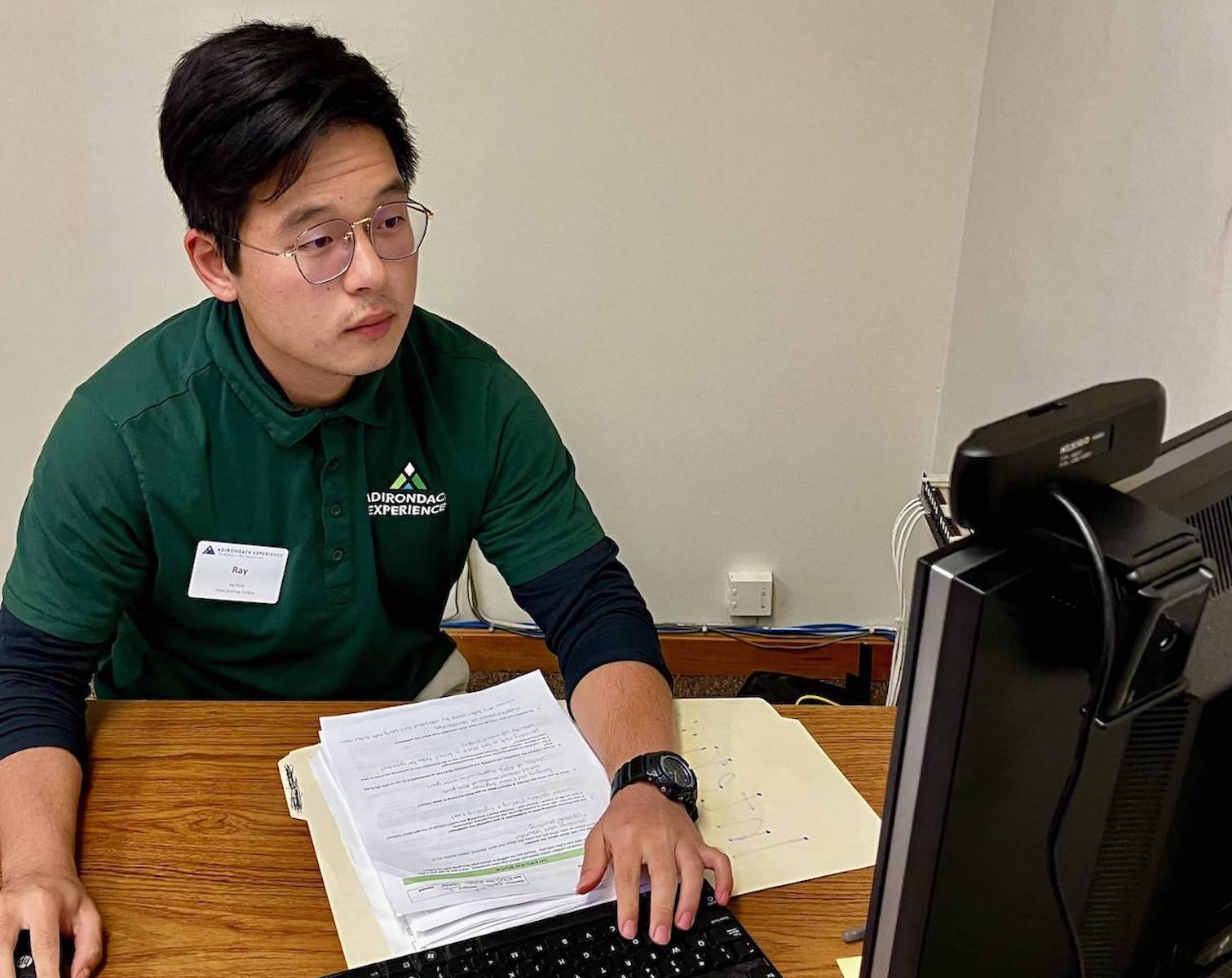History major Ray Zhang ’24, from Ningbo, China, is one of 31 student fellows who completed research with a community-based organization in upstate New York this summer as a part of the Upstate Institute Summer Field School. He describes his summer experience evaluating the experience of visitors to a new exhibit at Adirondack Experience, The Museum on Blue Mountain Lake, in his own words:
What is it like to spend an entire summer immersed in the Adirondack forest? As a Summer Field School Fellow, I had the privilege not only to discover this firsthand, but also to engage in meaningful work at Adirondack Experience, The Museum on Blue Mountain Lake (ADKX), nestled in the heart of the Adirondacks. ADKX strives to be the preeminent, trusted repository for the material culture and stories of the Adirondacks’ diverse people, past and present. The museum is committed to continually examining and interpreting the collective cultural heritage to maintain its relevance and the affection of the public.
As the largest cultural institution in the Adirondacks, the museum was the perfect place for me to develop my expertise in the museum studies field. Opened in 1957, the museum is a non-profit organization that preserves and interprets the diverse stories of Adirondack history, culture, and people to spark thoughtful dialogue and help shape the Adirondacks. Visitors to the museum can experience these vast histories and heritage through the more than 30,000 objects, 70,000 photographs, 9,000 books, and 800 original manuscript materials housed and exhibited within.
My role as an audience evaluation interpretive fellow focused on assessing the brand-new exhibit "Artists & Inspiration in the Wild," which opened July 1. This exhibit illustrates how the natural features of the Adirondacks—including light, forests, water, and mountains—have sparked the creative visions of painters, sculptors, and artisans for hundreds of years. The exhibit features a wide variety of paintings and collections from the 19th century to the present day, and the exhibit ends with a unique Adirondack-style maker space designed by artist Barney Bellinger, where visitors can explore and create for themselves.
In my research, I obtained feedback from visitors to determine their motivation for visiting the exhibit, their personal experience in the visit, and their ideas for future improvements to the museum to enhance the experience and encourage return visits. I did this by timing and tracking visits as well as surveying visitors. I also worked with community partners to develop marketing programs to promote the exhibit at local community events such as the Adirondack Summer Concert Series, Rustic Furniture Fair, and Adirondack Artisan Festival.
Since the opening of the new exhibit on July 1, I have worked closely with my fellow museum workers to time and track more than 110 visitors' movements through the exhibit and interviewed 97 visitors about their experience. The museum will use the data from these evaluations to plan exhibitions and programs that maximize relevance and personal meaning for visitors and to ensure that content meets visitors where they are.
Museums are evolving institutions within local communities with the flexibility to be responsive to social change and community advancement. Therefore, evaluation is the most effective method for museums to learn what they need to do to continue to serve their diverse audiences and will inform future exhibitions at the Adirondack Experience. The evaluation project will also contribute to strategic institutional efforts to address visitor needs while continuing to play a significant role in the development of the economic health and tourism industry in the area. I am grateful for the exhibition evaluation training which has helped me recognize and respond to visitor needs in the museum space and to view the museum through the diverse perspectives of its many visitors. I am looking forward to using my newfound skill set to further address community needs within the museum space in the future.
